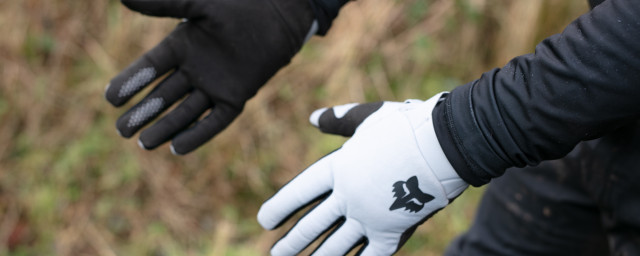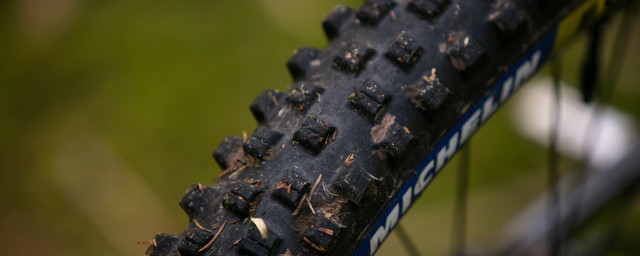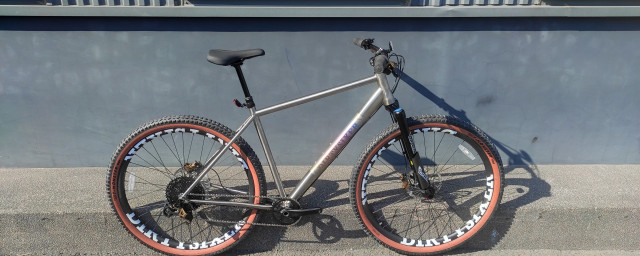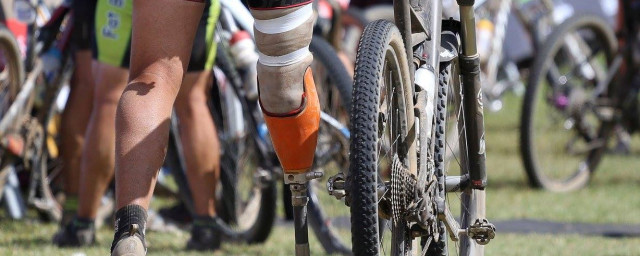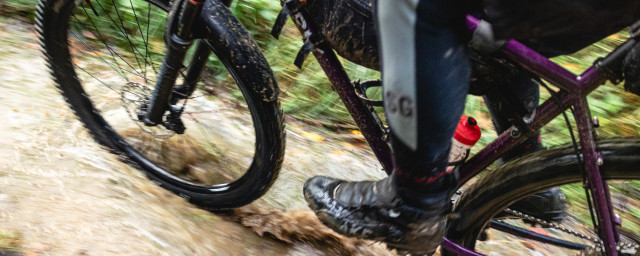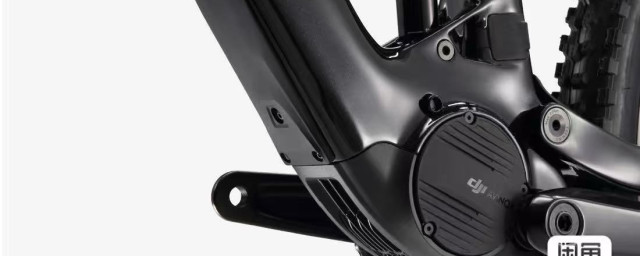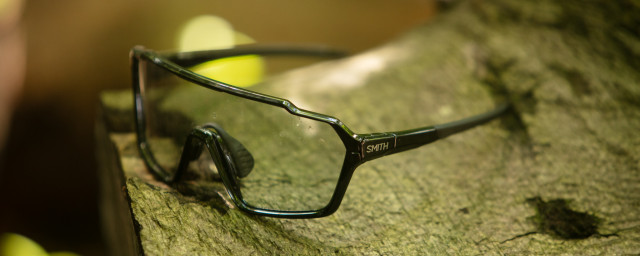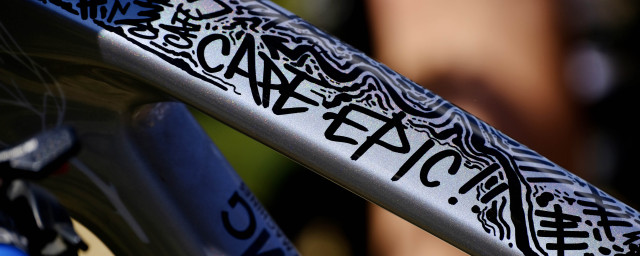Exclusive interview with Peter Kettenring - the designer of Canyon’s all-new carbon-fibre Torque:ON CF

[Sponsored content]
Canyon’s recently-launched Torque:ON CF freeride e-bike is a true revolution in trail potential. Canyon itself says it is the brand’s ‘most capable gravity e-MTB made for big terrain, and bigger air’ and just one look at the Torque:ON CF’s exquisitely sculpted carbon-fibre frame suggests it really is something very special.
- Canyon's e-MTB and e-gravel bike range 2023
- Canyon Spectral:ON CF8 e-MTB review
- Canyon Strive:ON CFR first ride review
In this exclusive interview, we spoke to the man behind that exquisite design – Canyon’s team leader of product design Peter Kettenring – to find out how he and his designers have created a machine that raises the bar when it comes to the performance of gravity e-MTBs.
ORCC: So Peter, how did you become a bike designer?
PK: As a child, I used to draw and paint a lot but I was also super interested in machines, not the technical aspects of them but more the aesthetics. Of course, I also was super interested in mountain bikes.
I didn’t really know then that industrial design was a profession I could follow. First, I applied to university to study graphic design but, before I started that course, I realised that industrial design exactly matched what I liked to do and perhaps what I am best at, so I changed course.
After my studies in industrial design, I first worked as a classic product designer, working on things like cell phones and kitchen appliances – all nice stuff but completely different to what I do today.
In 2012, I started with Canyon as the brand’s first in-house designer. Before that, Canyon had used agencies and external designers, but since 2012 I have built up our design department. We now have 25 people here, which makes it one of the biggest design departments in the cycle industry.
I would say that the focus on bike design is getting more and more important all the time – possibly because of e-bikes where you have bigger volumes to deal with and, I would say, customers are getting more picky in terms of the appearance of the whole bike.
Give us an overview of the Torque:ON CF. What is it?
The Torque:ON CF is a super special bike for us at Canyon Design because it is an all-new model, and also an all-new platform. It’s like in the car industry: sometimes you have platforms that are in production forever, although they go through some form of evolution. But the most interesting projects in my opinion are those where you can start from scratch and really try out ideas and concepts that you have only ever had in your mind before. The Torque:ON CF was such a project.
To me, the Torque:ON CF is a modern freeride bike. It is so capable in what it can do with gravity riding, but it is not attached directly to any discipline – it’s not an enduro bike, it’s not a park bike, it’s not a downhill bike. It really offers all the freedom that you can imagine and the chance for riders to break free of their limits, whether that is taking on steeper hills, more technical sections, or harder climbs. That’s what makes it really special to me.
Do you design your bikes using CAD (computer-aided design), or how else do you design them?
We use all manner of design techniques. CAD is absolutely taking over and probably accounts for 80% of the whole process. But in CAD we use a design programme that allows us a lot of freedom, so we are not typing in measurement data to create our designs, it’s more like painting in CAD.
However, we always start with some hand sketches and also some 2D sketches in Photoshop – digital sketching, but 2D rather 3D. We get really deep into CAD by the end of the process because we are manufacturing the carbon frame from our programme. It is us, designers that are preparing the data for the mould that creates the shell of the bike, so we cannot stay free and loose with the design and then hand it over to manufacturing.
But for most of the process, we are much more free with the way we use CAD than you might imagine. It’s really not that technical engineering type of CAD, it’s more like trying out rough forms in 3D and turning it to see how the light plays off of it. It actually offers us a lot of freedom.
Some areas of carbon bike design – such as carbon road bikes – seem to have been around for so long that it feels as though manufacturers just make little tweaks here and there, but what you’ve done with the Torque:ON CF seems revolutionary rather than evolutionary. How do you go about designing something completely new with carbon fibre, as with the new Torque:ON CF?
I wouldn’t say that in road bikes it’s easier to handle the carbon, it’s just that carbon fibre has been in road bikes for a longer period of time. I think in mountain biking there were other topics in earlier years to focus on, such as suspension technology or disc brakes. But as we have got better at understanding each of those technologies, and each technology has gotten nearer the peak of performance, carbon has become more and more important in mountain biking.
As product designers, we get a lot of unbelievable opportunities with carbon fibre because we can do whatever we want in terms of shapes and sculpture. But that’s not the main advantage of carbon here – the main benefit here is more to do with the technical advantages we get from carbon.
The issue of weight – especially in the case of gravity bikes – has become more important to deal with. The idea of having light and capable bikes is hugely important. So the concept of carbon gravity bikes is not really new but we are getting better with it all the time. However, all that said, the Torque:ON CF is an all-new concept because the Torque:ON was only an aluminium bike before.
Were you looking to replicate the ride characteristics of the previous Torque:ON aluminium model or were you going for a whole new take on it?
I would say that this is way more than just a carbon version of the Torque:ON aluminium model: this is a whole new bike. It shares the name and maybe some of the knowledge that we gained with the aluminium Torque:ON but I don’t really see them as comparable carbon and aluminium siblings. It’s not just about the different materials we use but also things like the battery size, the different kinematic system with the shock sitting in a different position, and everything is more inspired by Moto. To us, it’s a completely new bike.
Tell us about how Moto has influenced the Torque:ON CF’s design.
I would say it has been influenced a lot by Moto because of what that discipline offers riders. If you have enduro moto bikes, you can really take on steep hills and you can do so many different styles of riding. We feel as if the Torque:ON CF should match that kind of approach.
So the Torque:ON CF is inspired by our Sender downhill bike and by moto enduro bikes, but it also looks different to the bikes we have down before – it’s really more progressive and capable of harder climbs and bigger jumps.
We also always have in mind that we want to bring the character of the bike through the design. We don’t just want to find nice lines that are flowing from front to back, we also ask ourselves about the core of the product and how we can show it. So if you see the bike, you hopefully get the right understanding of what it can do.
The best design is when you can get the optimum out of all factors: performance, appearance, and packaging of all the necessary component parts. Our philosophy is that design is not an isolated aspect or discipline. In some companies it can be – you get a package from an engineer and, as a designer, you design around it. But that’s not the way we work. We see ourselves as being completely integrated into the R&D department within Canyon, which means we are working all together right from the blank sheet of paper stage.
It can be challenging, but we find so many situations where both aesthetics and functionality are optimised that wouldn’t have happened had we been working independently.
Moto might be one inspiration, but another seemingly, is hairstyles! The Torque:ON CF is a mullet format bike with a 29er wheel up front and a 650B wheel at the back. Can you tell us a little bit about what mullet is and the philosophy behind it?
Mullet has a lot of advantages. I would actually say it’s the best option you can get in gravity riding because, previously, we had always been arguing about the potential of 650B versus the potential of 29er.
The full 29er is really for fast tracks where you can carry your speed and, if you have small obstacles, 29ers are better for rolling over them. But, on the other hand, if things are getting technical and tricky, you really want to have a smaller bike to deal with it – like BMX guys who can do crazy tricks or a lot of gravity riders who kept their 26in bikes because they were so handy and playful.
With mullet, we get both sides. It is something like a compromise, but it doesn’t feel like a compromise at all. You have the big wheel at the front to give you safety, but with the smaller back wheel, it makes the bike shorter and more playful. So it’s much more than a compromise – I personally would always go for the mullet.
The marketing literature for the Torque:ON CF talks about bigger batteries, more powerful motors, and stronger frames – how can you do all that but still have the new Torque:ON CF weighing 1.5kg less than the previous aluminium model?
Technology is always moving forward – that’s a good thing – and we are really able to make the most of the potential in the technology. At Canyon, we believe we can constantly get better every time, which means making a lighter bike that is still stiff enough.
But, as you mentioned, there’s the issue of battery size and that is connected to the idea of freedom that I mentioned before. We have managed to co-develop a big battery that is the new benchmark in the industry.
Tell us about those 720 and 900Wh batteries, because they look to be something special.
Well, actually, we didn’t want them to look special at all when they are on the bike! That was one thing we targeted from the design side of things: to have the biggest battery on the market but to have a package and a design where the battery is still super integrated and nicely wrapped by the frame.
In terms of the expertise to develop such a special piece of technology, that is more thanks to our engineers and you can be sure that they learnt a lot of lessons while developing this battery because this is a new field for us.
Is there any particular design element of the Torque:ON CF that you are especially pleased with?
There is a whole range of details that we could talk about but, for me, it is the general flow of the design from the seat stays, over the rocker to the downtube area, all in what we might call one gesture. In the design department, we are always trying to find a design trick that combines the whole bike and makes it look like it’s been cast in one go. So, to go from front to back in one gesture, as almost one piece and not look like a collection of components, that is what I like most about this bike.
Sometimes there is the impression that bike brands bring out new models purely for the sake of marketing, rather than improved performance. What is your take on that?
I would say, if you are a person who is really focused on doing things better every time because this is your passion rather than just being your job – and all the designers in my team are passionate cyclists – then there is a lot of self-motivated drive for us to do things better.
Also, as creative people, we tend to get bored quite quickly with the status quo, so I feel that our designers and engineers are the main motivating factor for new things and making better bikes, more so that the customer actually.
Sometimes I have to ask myself, is the customer even ready for what we’ve got? It’s not that we think the customer needs to see something new every year, for me, it’s the other way round we can naturally push too far into the future, and we sometimes have to bring it a step back.
Finally, what should our readers expect if they were to get a ride on a new Torque:ON CF?
I think what they will feel is that they won’t reach their limits, at least not initially – there’s so much potential in this bike. And what I hope they will feel is the amount of fun there is to be had on this bike. It’s full of playfulness. I want them to jump on the Torque:ON CF and find themselves smiling a lot more than on any other bike they ride – that’s the most important thing I would like.
To see more about the new Torque:ON CF, visit www.canyon.com and check out our first ride review of the Canyon Torque:ON CF 9.






